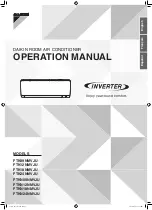
NetCol5000-A020 Air Cooled In-row Precision Air
Conditioner
User Manual
3 Installation Guide
Issue 01 (2014-06-30)
Huawei Proprietary and Confidential
Copyright © Huawei Technologies Co., Ltd.
41
The thickness of the thermal insulation foam for refrigerating and water cooling pipelines
should be at least 13 mm.
Ensure that the water pipelines with thermal insulation foam can pass through holes the on
bottom plate.
Figure 3-17
shows specifications of the holes.
3.7.1 Routing Refrigerant Pipes
Prerequisites
Before welding the refrigerant pipes, reclaim nitrogen from the refrigerant pipes to avoid
explosion and injuries.
Before welding the refrigerant pipes, take protective measures for needle valves 500 mm
or near to the welding position (by taking out the valve plug or wrapping the valve with
wet cloth).
During the welding process, avoid burning the bottom plate, top plate, and side panels,
especially the thermal insulation foam, labels, water pipes, and cables.
During the welding process, do not expose the refrigerant pipes for over 15 minutes.
Otherwise, system reliability may deteriorate.
To avoid leakage of ventilation channels and damage to copper pipes, seal the holes after
the pipes are routed. Seal the ends of the copper pipes to prevent foreign matter from
entering the refrigerant pipes.
The refrigerant pipes should be wrapped with thermal insulation foam.
Avoid bends and ensure that the indoor and outdoor units are connected with shortest
pipes.
Procedure
Step 1
Remove the two plugs from the pipes using a welding torch, as shown in
Figure 3-23
.
















































